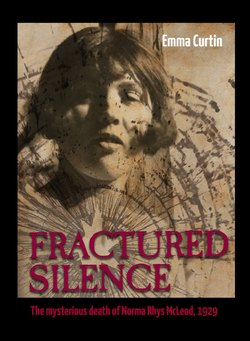Читать книгу Fractured Silence - Emma Curtin - Страница 5
На сайте Литреса книга снята с продажи.
____________________
ОглавлениеThrough analysing the newspaper reports, I’d made a start on trying to map out what had happened on the day of Norma’s death and who the ‘key players’ were in the mystery. At this stage, it was all just a game; an interesting distraction from regular work. The reality of Norma as ‘flesh and blood’ hadn’t yet hit.
But where to now? While the newspapers provided great context, I knew I needed to get hold of the firsthand evidence gathered by police to get to the ‘truth’, however elusive that might be.
I had the advantage of having studied history at university, and written a couple of local histories, so while I’d never written about a crime, I had some idea about where to start an archival search. For me, the obvious starting place was the Public Records Office of Victoria. This wonderful organisation is a proverbial gold mine for historians.
Here I searched for, and found, the listing for inquest documents relating to Norma Rhys McLeod, dated 1 November 1929.
If you’ve done some research yourself, you’ll understand how great it feels to ‘discover’ what you’ve been looking for. I didn’t yet feel like a detective, or as I said above, a sense of Norma, the woman. I was more like a child on an Easter egg hunt who’d found the biggest egg. But at that moment, this precious archived package was more enticing to me than any chocolate. I knew it would take me down new avenues of discovery and provide more pieces of the ‘Norma puzzle’.
The inquest file arrived in a thick, see-through plastic zip-lock bag. The bundle wasn’t large, not what I’d expected, but it was a thrill to open the neatly-folded, slightly faded documents, apparently untouched for decades. The distinctive smell of old paper hit me as I turned the pages and dust brushed off on my fingers. It was a sensory delight; a researcher’s idea of bliss.
The inquest documents consisted of two large drawings – one a plan of the McLeods’ house; the other a drawn outline of the local area, to be exhibited at the inquest in relation to one of the police theories (if you're interested, both can be seen via the website - see https://murderarchives.com.au/documents-and-images/). Also in the package of documents were the original police report of Norma’s death, the pathology report, witness statements, a list of exhibits and the coroner’s verdict.
I took extensive notes and a lot of photographs of the material, so I could refer back to it at my leisure. I also wanted to share it with my husband, John. He too would become fascinated by Norma’s story, although not to the same obsessive extent as me.
So, armed with this documented information and the newspaper accounts, I could now begin to piece together Norma’s last day. More detail, and more questions, would emerge as my investigation deepened.
But before I get to that, you need to get a sense of the tragic ‘event’ itself. Every good detective story must set the scene before a reader’s investigation can begin. This is no less important in a true crime. So, what is provided below represents the ‘facts’ as they were recalled by the various ‘actors’ in the mystery. Like pieces of a jigsaw, they have been put together to create the ‘whole’. Theories and inconsistencies in these accounts are discussed in the chapters that follow.
